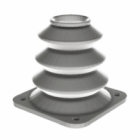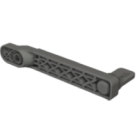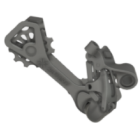Is 3D printing the future?
The question “Is 3D printing the future?” isn’t just about machines replacing factories — it’s about redefining what manufacturing even means. For decades, production has been centralized, capital-intensive, and optimized for volume. Additive manufacturing challenges that model, offering flexibility, localization, and design freedom in ways that traditional systems can’t match.
If we’re asking if 3D printing is the future of manufacturing, the better question might be: can it reshape how industries scale, adapt, and sustain themselves in a volatile world?
From mass production to mass adaptation
Traditional manufacturing is built on repetition: produce one tool, use it to make a million identical parts. It’s efficient — but brittle. In a world of rapidly shifting demand, geopolitical tensions, and supply chain fragility, adaptability is more valuable than scale alone.
3D printing introduces a model based not on mass production, but mass customization and mass resilience. It enables production systems that are nimble, digitally connected, and geographically distributed. Designs can be updated without tooling changes. Parts can be produced closer to the point of need — or even on-site.
This shift doesn’t eliminate traditional methods but complements them. In that sense, 3D printing is not the future of all manufacturing — but it is likely to define the most adaptive parts of it.
Rewriting sustainability at the source
The pressure to reduce environmental impact is no longer optional — it’s a requirement. The future of sustainable manufacturing depends on two things: resource efficiency and system efficiency. 3D printing touches both.
It minimizes material waste by adding only what’s needed, eliminates the need for molds and dies, and supports local production that reduces transport emissions. But more importantly, it supports design-level sustainability: lightweighting parts, embedding performance, and extending lifecycles through repairability.
So, is 3D printing the future of sustainable manufacturing? In part, yes — because it moves sustainability upstream, into the design and engineering phase, where impact reduction is most powerful.
A digital-native approach to manufacturing
Unlike conventional methods, additive manufacturing is natively digital. It runs on files, not fixtures. It scales through software, not floor space. And it brings manufacturing into the same iterative, data-driven loop that already defines modern design, marketing, and logistics.
In the future, this could enable fully integrated workflows: where design, simulation, production, and logistics are part of the same cloud-based system — monitored, optimized, and adjusted in real time. 3D printing isn’t just part of the future — it’s part of the digital infrastructure that the future will depend on.
So, is 3D printing the future?
Not exclusively. But in a world that demands agility, sustainability, and local relevance, 3D printing is one of the few manufacturing tools that’s truly built for what’s next. It won’t replace all other methods — but it will enable entirely new ones.
Whether it’s creating parts on Mars, tailoring implants in a hospital, or bypassing supply chains in remote regions, 3D printing isn’t just a production method — it’s a strategic enabler. In that sense, yes: 3D printing is the future — not of all things, but of everything that’s about to change.
Explore also
- What is the future of 3D printing?
- Future uses of 3D printing
- 3D printing vs traditional manufacturing
- What will 3D printers be used for in the future
- Trends in additive manufacturing
- AI in 3D printing
- Automation 3D printing
- Next-generation 3D printing materials
Related categories
 Austria
Austria  Bosnia and Herzegovina
Bosnia and Herzegovina  Bulgaria
Bulgaria  Croatia
Croatia  Czech Republic
Czech Republic  Denmark
Denmark  Estonia
Estonia  Finland
Finland  France
France  Germany
Germany  Greece
Greece  Hungary
Hungary  Ireland
Ireland  Italy
Italy  Latvia
Latvia  Lithuania
Lithuania  Poland
Poland  Portugal
Portugal  Romania
Romania  Slovakia
Slovakia  Slovenia
Slovenia  Spain
Spain  Sweden
Sweden  Switzerland
Switzerland  United Kingdom
United Kingdom  Ukraine
Ukraine  China
China  Hong Kong
Hong Kong  India
India  Israel
Israel  Japan
Japan  Malaysia
Malaysia  Philippines
Philippines  Saudi Arabia
Saudi Arabia  South Korea
South Korea  Taiwan
Taiwan  Thailand
Thailand  Turkey
Turkey  United Arab Emirates
United Arab Emirates  Egypt
Egypt  South Africa
South Africa  Tunisia
Tunisia  Canada
Canada  Mexico
Mexico  United States
United States  Brasil
Brasil  Colombia
Colombia  Australia
Australia  New Zealand
New Zealand 












